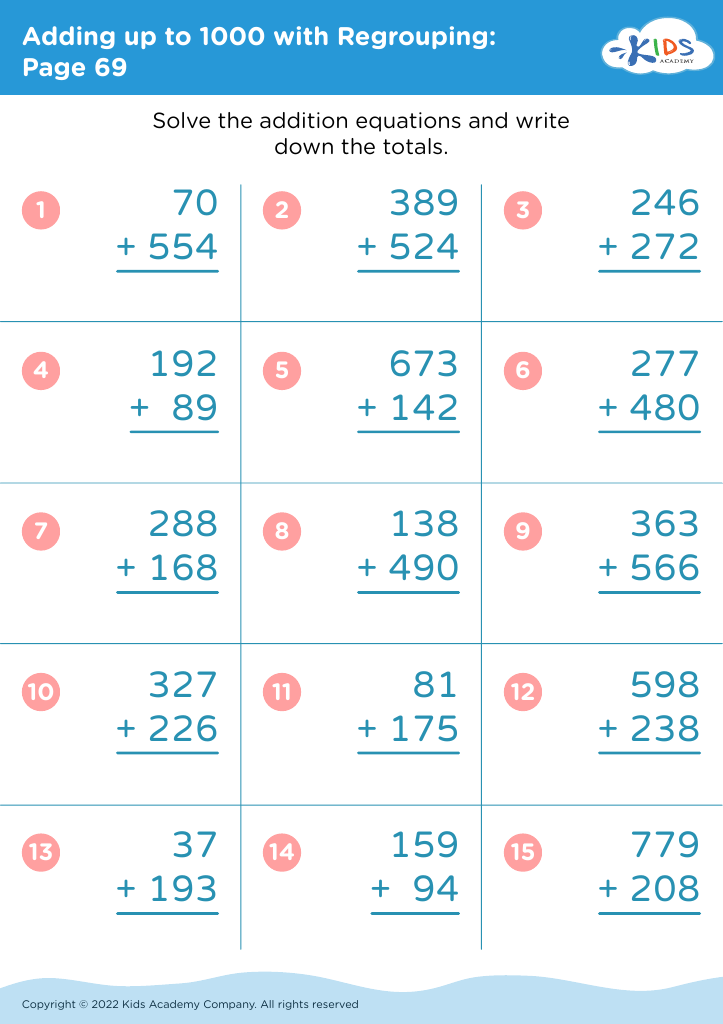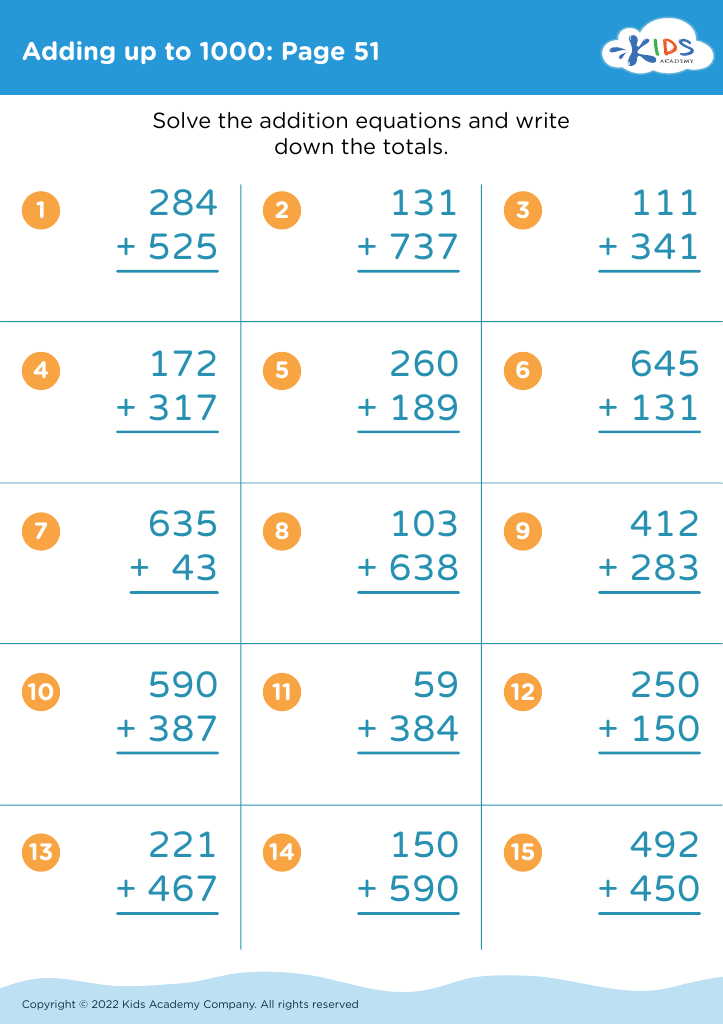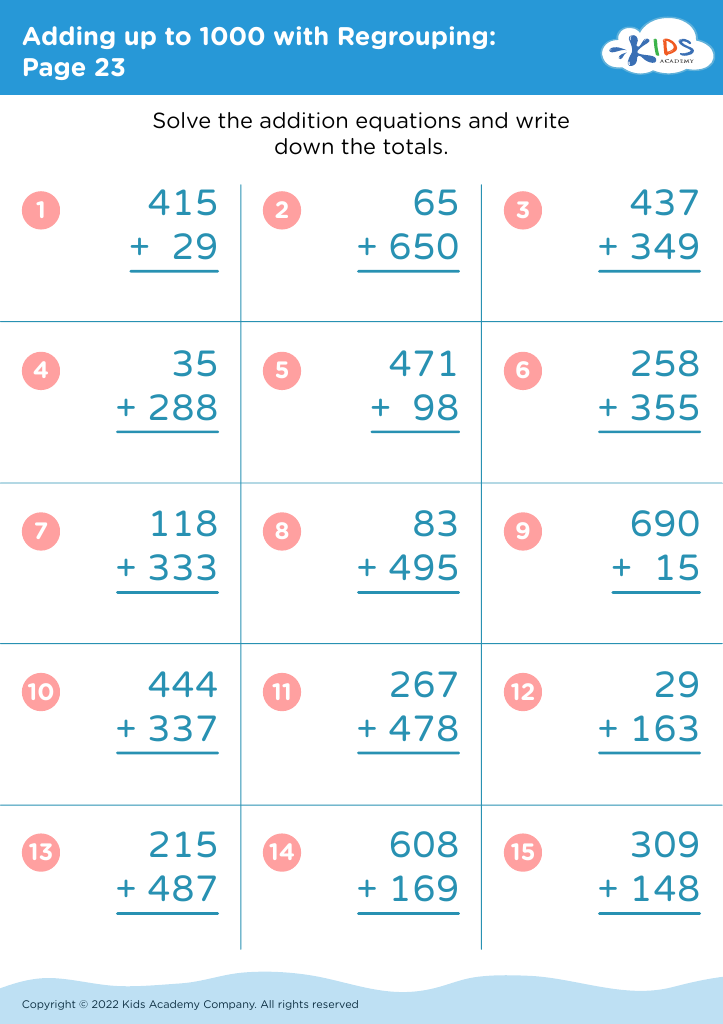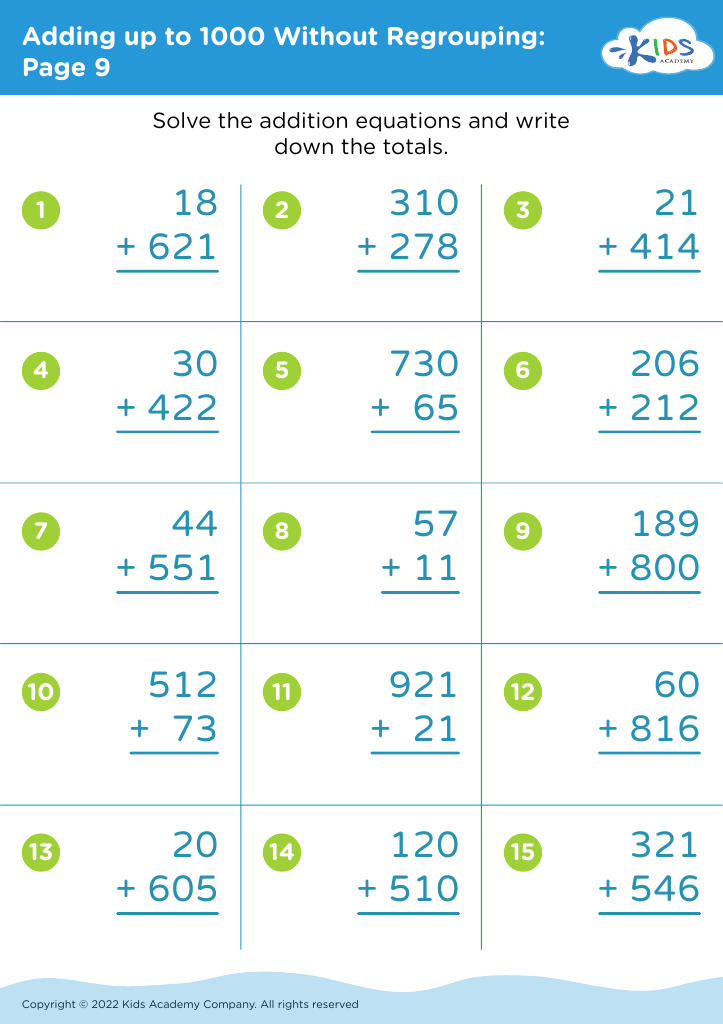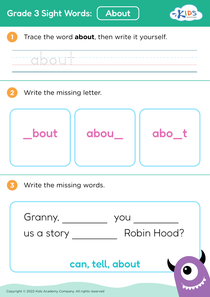Identify shapes Grade 3 Addition Worksheets
4 filtered results
-
From - To
Welcome to our Grade 3 Identify Shapes Addition Worksheets page! Here, students will explore the fascinating connection between geometry and addition. These engaging worksheets offer a variety of activities where learners can identify shapes while solving addition problems, helping to strengthen both their mathematical skills and spatial awareness. Aligned with third-grade standards, our printable resources include colorful visuals and fun exercises designed to capture students’ interest. Perfect for classroom practice or home study, these worksheets will reinforce essential math concepts while making learning enjoyable. Dive into shape identification and addition today and watch your child's confidence grow!
Identifying shapes and understanding addition are foundational skills in the lower grade curriculum that lay the groundwork for more complex mathematical concepts later on. For parents and teachers, nurturing these skills in Grade 3 students is essential for several reasons.
Firstly, shape identification fosters spatial awareness, which is crucial in everyday life and in various fields such as engineering, architecture, and art. When children can recognize and categorize shapes like triangles, squares, and circles, they develop critical thinking skills and can relate mathematical concepts to the real world, enhancing their overall learning experience.
Secondly, mastering addition not only improves numerical fluency but also supports problem-solving abilities. Grade 3 is typically when students delve into multi-digit addition and begin working with word problems, which unlocks a deeper understanding of math. Encouraging practice in these areas helps build confidence, making students more willing to tackle new challenges.
Lastly, integrating shape identification with addition activities can create engaging, interdisciplinary lessons. For instance, using geometric shapes in word problems makes learning more relatable and fun. Consequently, parents and teachers who emphasize these skills are setting their children up for success in future academic pursuits while instilling a positive attitude towards mathematics.
